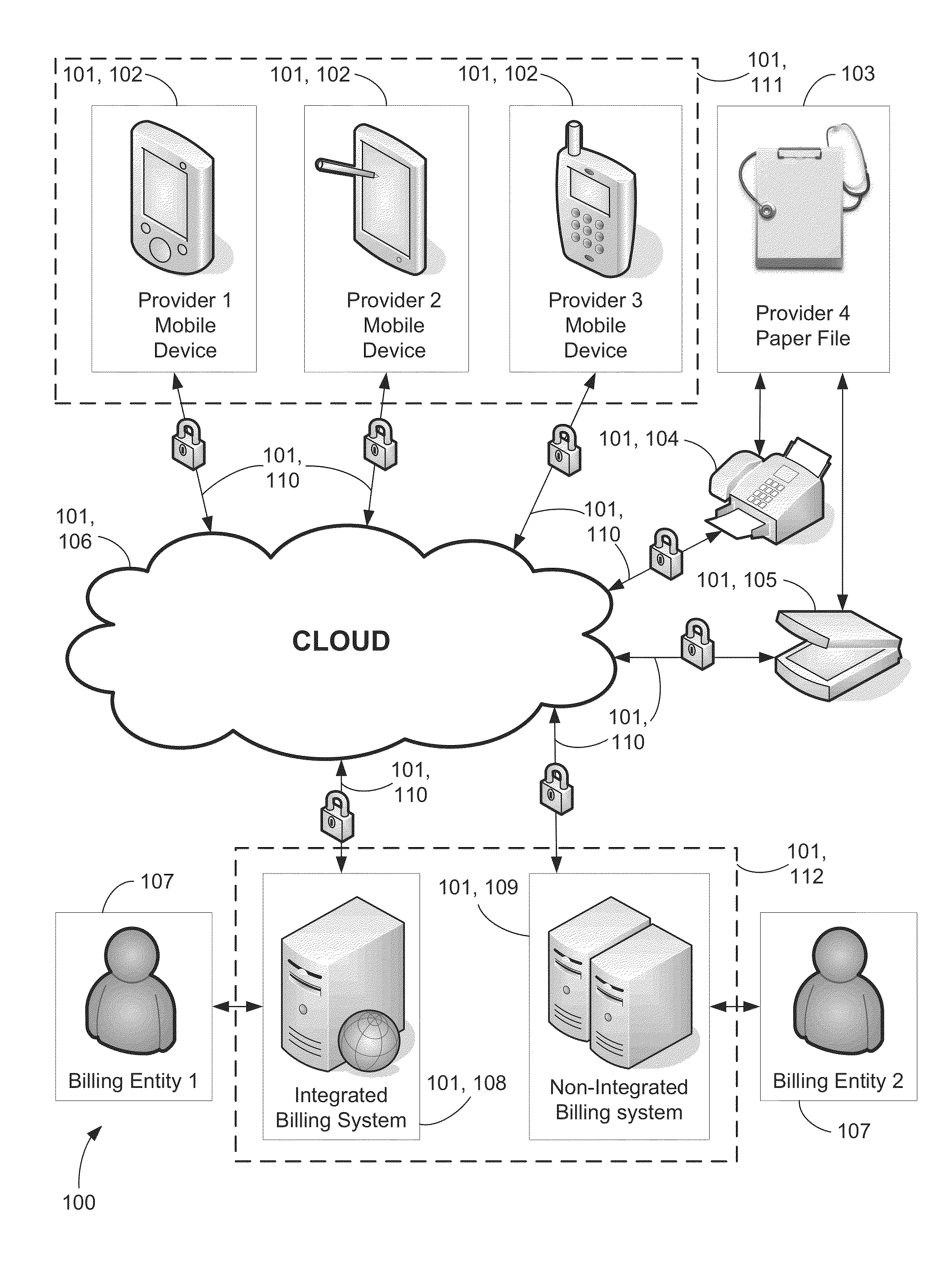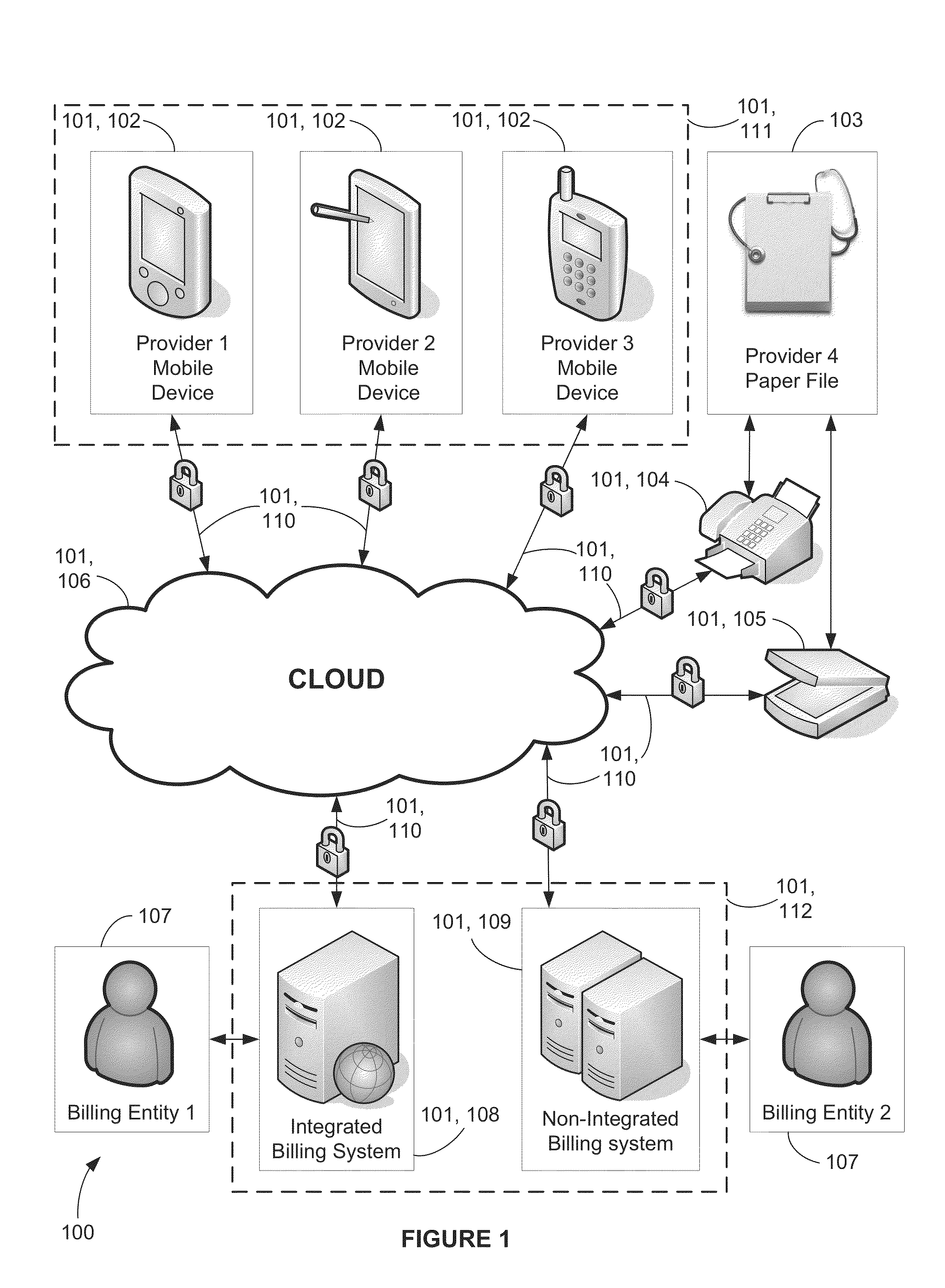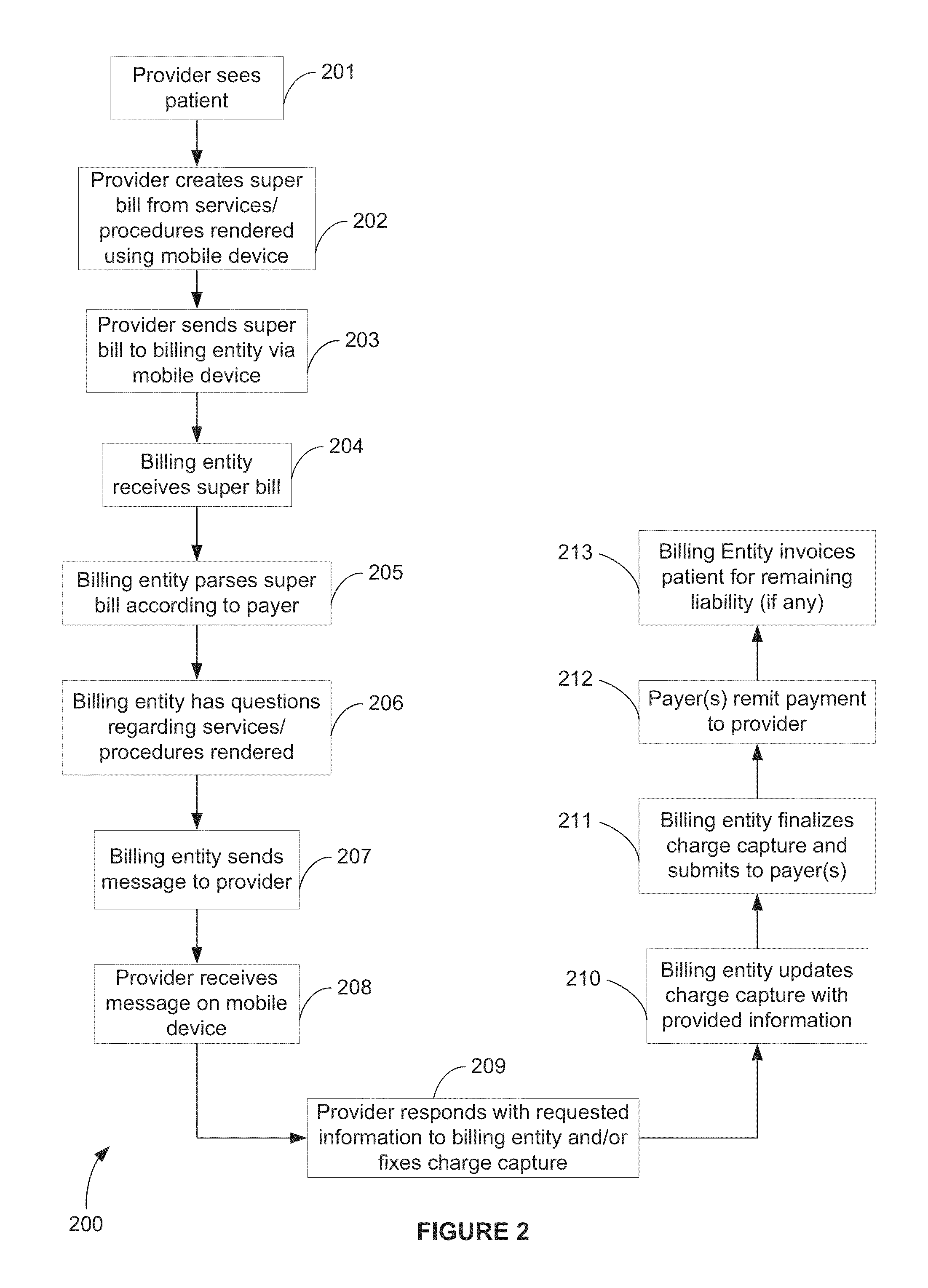System and method for providing real-time bi-directional charge capture-centralized conversation between billing and provider entities
a billing and provider entity technology, applied in the field of billing practices, can solve the problems of inability to provide robust applications or devices, and inability to prevent most errors from free form typing, so as to reduce or eliminate the delay, facilitate the receipt of billing and other problems, and reduce the delay. , the effect of reducing or eliminating the delay
- Summary
- Abstract
- Description
- Claims
- Application Information
AI Technical Summary
Benefits of technology
Problems solved by technology
Method used
Image
Examples
Embodiment Construction
[0086]In describing the exemplary embodiment of the present disclosure, as illustrated in FIGS. 1-20, specific terminology is employed for the sake of clarity. The present disclosure, however, is not intended to be limited to the specific terminology so selected, and it is to be understood that each specific element includes all technical equivalents that operate in a similar manner to accomplish similar functions. Embodiments of the claims may, however, be embodied in many different forms and should not be construed to be limited to the embodiments set forth herein. The examples set forth herein are non-limiting examples, and are merely examples among other possible examples.
[0087]Referring now to FIGS. 1-20, by way of example, and not limitation, there is illustrated an example embodiment of system 100 for providing real-time bi-directional charge capture-centralized conversation between Billing and Provider entities, wherein system 100 comprises computer apparatus 101, charge-cap...
PUM
 Login to View More
Login to View More Abstract
Description
Claims
Application Information
 Login to View More
Login to View More - R&D
- Intellectual Property
- Life Sciences
- Materials
- Tech Scout
- Unparalleled Data Quality
- Higher Quality Content
- 60% Fewer Hallucinations
Browse by: Latest US Patents, China's latest patents, Technical Efficacy Thesaurus, Application Domain, Technology Topic, Popular Technical Reports.
© 2025 PatSnap. All rights reserved.Legal|Privacy policy|Modern Slavery Act Transparency Statement|Sitemap|About US| Contact US: help@patsnap.com



